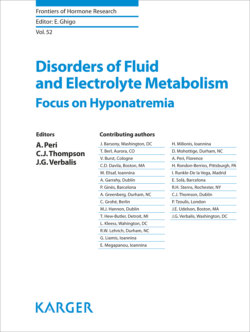Читать книгу Disorders of Fluid and Electrolyte Metabolism - Группа авторов - Страница 50
На сайте Литреса книга снята с продажи.
Hyponatremia in the Intensive Care Setting
ОглавлениеDysnatremias, that is, hypo- as well as hypernatremia, are common findings in the critical care population. Stelfox et al. [58] reported an incidence of intensive care unit-acquired hyponatremia ([Na+] <133 mEq/L) of 11% in medical-surgical ICUs in a Canadian hospital. In line with these findings, 2 more recent analyses of databases encompassing approximately 150,000 [59] and 13,000 [60] mixed ICU patients found a hyponatremia ([Na+] <135 mEq/L) prevalence of 13.8 and 12.9%, respectively, with about 1.5% of all patients developing severe hyponatremia ([Na+] <125 mEq/L). Strikingly higher figures were reported from a retrospective study conducted in the 2 biggest ICUs in the Netherlands between 1992 and 2012 [61]. The authors found an incidence of ICU-acquired hyponatremia ([Na+] <130 mEq/L) of 47% in the mid-nineties, which decreased to 25% in years 2009–2012. Of note, in the same time the incidence of hypernatremia ([Na+] >150 mEq/L) almost doubled from 13 to 24%. A less liberal fluid management together with the more permissive use of diuretics as well as hydrocortisone in current practice were discussed by the authors as possible explanations for this shift.
